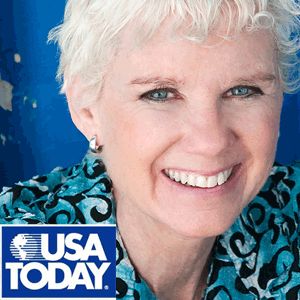 Jane Pauley gets it — the real fear that so many people over age 50 face about what they are going to do for the next 30 or 40 years.
Jane Pauley gets it — the real fear that so many people over age 50 face about what they are going to do for the next 30 or 40 years.
In her compelling new book, Your Life Calling: Reimagining the Rest of Your Life (Simon & Schuster, 253 pages, $26.00), Pauley, the formerToday show and Dateline NBC co-host, delivers a message of hope, possibility and adventure that Boomers staring at the prospect of living longer, healthier lives are hungry to hear.
“In the 21st century, 50 is the beginning of a new and aspirational time of life,” she writes. Her mission: “Helping people see themselves in positive and powerful new ways,” she writes.
At 63, Pauley is one of the leading edge of Baby Boomers, and she has been down the road of career and life reinvention after 50 herself.
Research shows that the typical midcareer transition takes about three years, she reports. “My own midlife reinvention took about four.”
Pauley spent hours and hours on her living room couch, reading and researching possibilities, looking for something she wanted to do with her life, generating ideas and pitching proposals to television executives.
The result: She became a Sherpa. Her job: to show you the new career paths that others have taken in their journey in the belief that you will learn from their stories. “I have long recognized the power of other people’s stories to help us see our own lives in new ways,” she writes.
Her book orbits around the people she has profiled in the regular segment she does for Today called “Life Reimagined,” co-branded with AARP.
Pauley has spent the past four years or so roaming the country and interviewing regular folks, who have looked carefully at their options of what to do next, and taken action. They were often spurred by a personal health crisis, a job loss or an early retirement to make a move.
Some, though, simply reached a stage in their lives when they yearned for something more, maybe even a chance for a do-over.
Pauley trumpets: “We’ve been given a second chance — to do the thing we’d always wanted to do, or never had a chance before to do, or never imagined we could. I think of these as ‘trying times,’ a time to try new things, and maybe even a time to try big things.”
Her carefully culled band of success stories consists of people who all stepped up to the plate and swung for the fences.
It’s a diverse bunch. You’ll meet an acupuncturist, alpaca ranchers, a chocolatier, and a founder of a non-profit to bring art supplies and programs to inner-city kids, among others.
Not every transition has been perfect, or brought money raining down from the skies, but they’re all winners on many levels with personal happiness leading the way. “This is how I define success: being someone who tries,” Pauley writes.
Pauley’s book is chockablock with keen insights for career transitions, but perhaps the best bits are when she shares her own personal journey of discovery. You get the sense that we’re all in this together, and it’s OK.
This is, however, not a how-to-book. You will not find a list of tips or resources to help you find start-up financing for your new business, for example, or great websites for more information.
While Pauley refers to this life stage as one of reinvention, she is quick to point out the misconceptions of such a word. She advises:
• Reinvention doesn’t mean you have to get it right the first time.
• It is not a total makeover.
• Not everyone has a passion to follow.
• Reinvention usually doesn’t arrive as an epiphany or a single life-changing event.
Here are a some of Pauley’s insights gleaned from her own experience and her observations of others seeking to “reinvent.”
• To help figure out what she was going to do — “I made a list of favorites things, places and songs; a list of things I did well or could learn to do better.”
• “Entering my late 50s, I knew that this time, if anything was going to happen I’d have to make it happen myself.”
• “Reinvention is a process. But I’ve realized that doing first and knowing second turns out to be a good description of the process that finally inspired me to make my move.”
• “Inspiration is everywhere, but you have to be looking.”
• “The idea that it is possible to learn something new in midlife can be exhilarating. Older learners come equipped with toolboxes of knowledge and experience waiting to be applied in new ways.”
Finally, “just take that first step.” She borrows a line from Dr. Martin Luther King Jr. to make her own case for trying: “Faith is taking the first step even when you can’t see the whole staircase.”
Read the original article here



You must be logged in to post a comment.